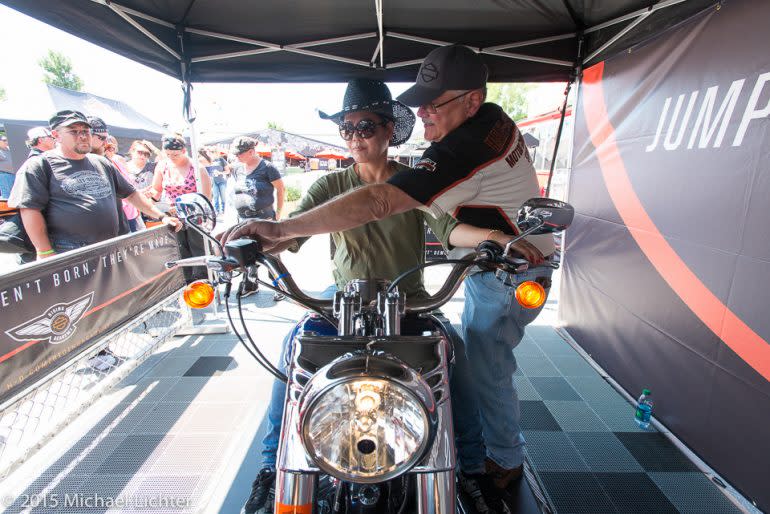Ask RideApart: How Will I Know I'm Ready to Ride?
Ask RideApart: How Will I Know I'm Ready to Ride?
Dear RideApart,
I live in Ohio and I'm preparing to get my motorcycle endorsement and take the MSF [Motorcycle Safety Foundation] class. I'm super excited but I don't know what steps, if any, should come between completing the MSF class and hitting the road. How will I know when I'm experienced enough to be competent on an open road?
I don't know anyone with motorcycle experience, so I'm kind of at a loss for guidance. What do you guys suggest?
– Kaitlin
––––
I'm sure many people can relate to your situation, myself included. I earned my license through a Basic Rider Course when I was 18 years old. The course – held in a YMCA parking lot – offered some valuable fundamentals but never saw me venturing onto public roads. So, once I had my motorcycle endorsement I didn’t feel very confident using it.
That led to a handful of unhappy experiences and within a year I had decided that perhaps this motorcycling malarkey wasn’t for me. I missed out on several happy years of riding as a result.

I don’t want that to happen to you, Kaitlin. So, my very first bit of advice is that you should take all advice with a big grain of salt. Including my own. Motorcycling is surrounded by a lot of folklore; many of the things you will hear from other motorcyclists will lack objective veracity. You need to set up your own internal fact-checker to help you filter through everything and determine what is right and true for you.
After all, the most important skill we develop as motorcyclists is that of making our own decisions – understanding what we’re doing, why, and what the consequences of our actions will be.
In other words, the only person who can decide when you’re ready to take on the open road is you. And you should not feel pressured or frustrated if your personal timescale turns out to be different than that of other folks.
Having said that, once you arrive at your MSF course you should express your concerns to your instructor. He or she may be able to help you focus on particular skills or techniques to build your confidence. For example, it may be possible for you to receive some additional training, or for you to take an additional Skill Practice course.
Beyond that, check out the MSF Street Strategies eCourse, an online course that focuses on improving your knowledge of how to ride on the street. It will set you back $20, but at least you can be relatively certain of receiving professional advice.

Which, of course, is going to be more useful than attempting glean information from the seemingly infinite number of moto-vloggers you’ll find on YouTube. A handful of folks, like RoadcraftNottingham, offer some helpful advice but definitely remember what I said about taking things with a grain of salt. Related to that: I’d strongly suggest that you steer clear of crash/road rage videos. You don’t actually learn anything and you run the risk of causing yourself unnecessary stress.
Riding well on the road involves the mastery of two skills: the physical act of operating the motorcycle, and the mental process of being fully alert to everything around you. That second skill is something you can work on without a motorcycle. When you drive, do your best to observe every single thing and consider how it might affect you and your fellow road users. Follow the advice of British police riders and cast your vision as far down the road as possible, then reel it back in. Over and over, always scanning and analyzing the information you’re taking in.
I’d personally argue that cycling regularly can also help, but, you know, grain of salt.
Eventually you will have to take the plunge and buy a bike. The standard advice is to buy used. Some dealerships will deliver a bike to your home, which means you can have it brought to an area with which you are familiar and comfortable. And once there it’s like I say: you’re the one making the decisions. You could choose to do nothing more than ride around the block for a year. It’s up to you. Just take your time, be patient, and slowly your confidence will build.
You’ll get there. Just stick with it.


